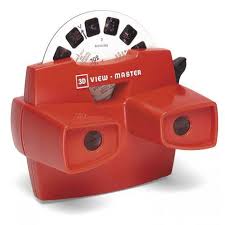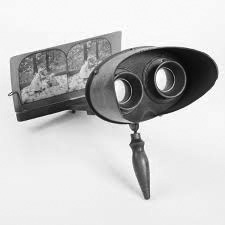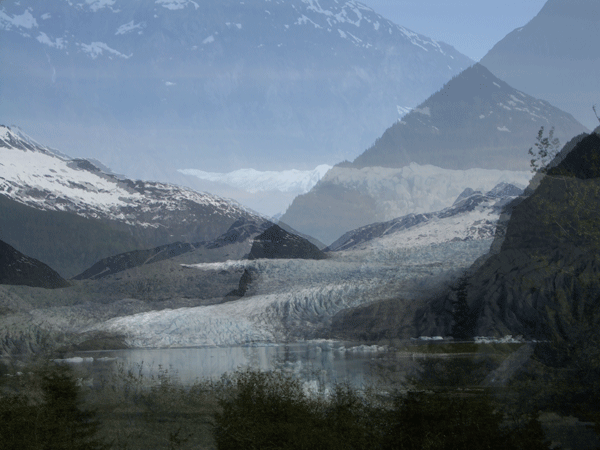Two eyes a short distance apart and facing the same direction are the key to depth perception. That’s not the whole picture, though. We learn at an early age that when we’re looking at two objects of the same size, but one appears smaller, the smaller one is farther away. We can do that with one eye, but to get the full benefit of depth perception, to get 3D, holographic, stereo vision, we need two eyes. Stereo vision works by parallax : the change in view between the position of the left eye and the right eye. The perspective difference gives us cues to the relative position of various objects indicating which is nearer or farther even if we don’t know the relative size of the objects. It also needs pointing out that the word stereo comes from the Greek word stereos, meaning solid—a solid has width, height, and depth—three dimensions.
Pardon the pedantic opening. It’s to insure that we clearly understand why two eyes are needed for depth perception, and equally important, what stereo means.
Stereo photography and 3D movies work on the same two-eyes (two views) principle. Take two images of a scene with two lenses 60 mm apart, about the average adult pupillary distance. Feed the left and right image respectively to each eye and you’ll see a recreation of the scene in stereo, as if you were standing there, complete with depth perception. You may remember the View-Master from the 1960s. It was a binocular-like thingy in which you inserted a cardboard disc that had pairs of color photos circling the perimeter. Hold the viewer up to a light source, look through the finder, and you’d see beautiful, lifelike, 3D images of famous sights from around the world.
You might also recall, from an earlier time period, stereo viewers that held a flat card with two side-by-side B&W images that looked identical. Yet, with the aid of the viewer, its two lenses helping your eyes focus separately on the individual left and right images, your brain would get the information needed to reconstruct the scene in stereo.
Now, imagine taking several images of a scene and mixing them together to make two composite images, one mix for the left eye, one for the right. What do you think you’ll see?
Yes, a confusing mess. Our brains can only process a single view per eye. That’s all we need to mentally assemble a 3D image.
We have two ears for the same reason—to hear in stereo, to perceive angular location and distance. This is, obviously, what stereo recordings are trying to capture. Take two microphones, approximately ear-distance apart, record the sound from each to a separate channel, and playback via two speakers—voilà, stereo sound—lifelike direction and depth perception.
Again, imagine taking the sound collected from several microphones, then mixing them down into two channels. What do you think you’ll hear?
As you know from experience, since most recordings are done with many microphones mixed down to two channels, it’s not the mess you get visually, but it’s obviously not going to capture 3D. Without the natural amplitude, time, and phase parallax between only two microphones, it cannot capture stereo. It’s merely two-channel. Any depth we might perceive is an artifact of our brain’s auditory processing. Yet for almost as long as stereo recordings have been around, and multitrack recordings started being made early on, no distinction has been made between stereo and two-channel. The word stereo continues to be used for multitrack recordings, each musician separately close miked, often done over many separate sessions, which could be days or weeks apart, and sometimes even at other studios. Later the separate tracks are mixed down into two channels, but still labeled as stereo. Wrong! It’s not stereo. There’s nothing bad about multi-track recordings. They just should not be labeled stereo. This practice has created the erroneous and common belief that stereo and two channels are synonymous.
Audiophiles talk a lot about soundstage and imaging, but most recordings can’t deliver the goods. If you want real, holographic sound, you have to start with a real, stereo recording. Every recording should be clearly labeled for consumer awareness. Until you’ve heard the real thing, you have no idea what you’re missing.
For more depth into how stereo hearing works, here’s a link to a good article on [Sound Location].
![[art]by[odo]](https://artbyodo.net/wordpress/wp-content/uploads/2011/03/cropped-Header.jpg)



Pingback: Reality Check | [art]by[odo]